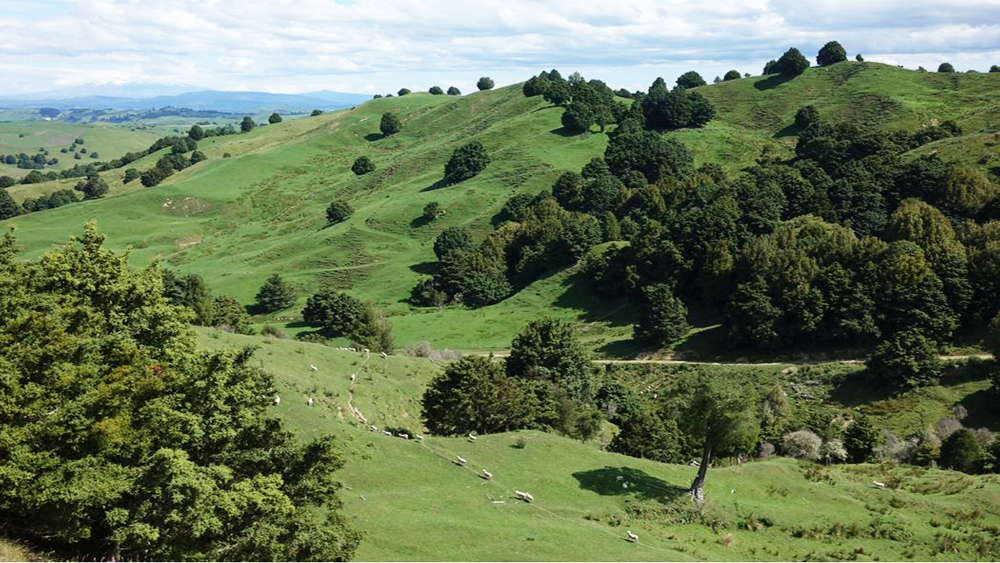
Dr. Adam Forbes from Forbes Ecology joined me on the podcast this week me to have a chat about sequestration. Forbes is principally a forest ecologist specialising in native forestry and native forest restoration.
I asked him how can we accurately count net emissions on farm if sequestration is not accurately measured? He said" "you would need to understand what's being sequestered on a farm to understand the net position. So I can't really suggest how else that could be done.” So essentially if we can't measure on farm sequestration, then essentially it is impossible to measure or have a net on farm emission value.
Forbes says understanding the sequestration of vegetation, particularly native vegetation, on farms, is a major incentive for people to be improving management of native forests and regenerating forests. He see’s it as major opportunity to encourage and incentivise people to be managing native vegetation. Sequestration, he says, is a major opportunity for landowners to be incentivised for looking after their forests and the vegetation and the land and managing it so that there's biomass being stored.
The focus with the ETS is around additionality and achieving carbon storage imputation, that wouldn't have occurred without the ETS. So that's why there's a line in the sand at 1990, but one can certainly understand farmers not getting recognition for sequestration pre-1990 is contentious.
Forbes says if there was an incentive that was more holistic and rewarded, ecological integrity, ecological health, resilience, these sorts of things. He thinks that would lead to much more balanced outcomes. “But like I say, we have the ETS at the moment and that is sort of a square peg in a round hole to my mind, in terms of an incentive for a forestation, but it's what we currently have and the trick is to make it fair and equitable.”
I asked him; If we can't recognize sequestration, then how on earth can we find a net emissions number? He said; “I agree this has to be kept simple. I think sequestration has to be an actual and transparent thing. We can't be falsifying any aspect of it, and we can't be leaving parts out of that equation either. I think that the best thing we can do is have a complete, accurate sort of accounting of sequestration. And if it means that there's sequestration happening on farms that farmers aren't currently being recognised for, that's obviously a problem right, because we're not going to have a complete picture of that cycle.”
The recommendation from the Climate Change Commission is that the non-ETS sequestration included in the He Waka Eke Noa proposal could receive recognition through a separate system, but would it be implemented before 2025? For an accurate picture of farmers on farm net emissions, which is what this conversation should only be about, total on-farm sequestration must be recognised and calculated from 2025, otherwise there are no net on farm emissions because half of the equation is missing, it’s that simple.
Listen to the podcast to hear the full story
P2 Steer
Select chart tabs
Angus Kebbell is the Producer at Tailwind Media. You can contact him here.
17 Comments
When sequestration is mentioned it almost always leaves out wetlands which can store huge amounts of carbon (more than forests per hectare in some cases). We've taken out about 95% of ours, so restoring them could have a significant effect (with bonus benefits for biodiversity, reduced flood risks etc)
What about sequestration by pasture? Pasture is still sequestering co2. If an animal eats that pasture and some of that co2 is released back as methane, farmers are going to be charged. But not credited for the first half of the cycle? I would have thought for the same reasons farmers can’t claim on soil carbon i.e it is in an equilibrium would be the same reason they can’t be charged for methane? Am I missing something?
Totally agree; here's an interesting paradox; if a farmer grows oil seed rape for bio-diesel the fact that it grows by sequestering atmospheric carbon is recognised.If he grows it and uses the rapeseed to finish cattle for meat the carbon sequestration is not recognised.
If a farmer grows a steer which at the end of it's life is popped in a pot, and boiled down to produce tallow for bio-ethanol, then the grass the steer ate in it's lifetime is recognised as sequestering atmospheric carbon.If the steer is chopped up by a butcher and fed to humans, the carbon sequestered by grass is not recognised.
Remember; in each case the sequestered carbon is returned to the atmosphere and not stored long term.So I guess we live in a time when producing food is seen as having lower intrinsic value than producing energy. Does anybody else think that is crazy?Don't believe me? Here's the link to a govt. paper on biofuels https://www.beehive.govt.nz/sites/default/files/2021-01/Biofuels%20-%20FACT%20SHEET.pdf
Normac
Yes, you are missing something.
The emission figures used for biogenic emissions (currently 28 cf a molecule of CO2) is less than the figure for non biogenic (fossil) methane (currently 30). So the fact that the CO2 comes from the atmosphere, via the grass, is already allowed for. But the myth that it is not accounted for lives on.
KeithW
Thankyou Keith. I appreciate the feedback even though I don’t know what a cf is.
I am a farmer trying to get my head around and understand the whole ETS thing. It is making my head spin.
I am enjoying the fact based articles on interest as it is hard to get a balanced view on these polarising matters and I don’t have the basic understanding or time to get into the scientific papers.
I accept that this is new govt policy and it’s going to be thrown at us if it reduces ghg or not, but can’t understand the math of how we are producing new ghg outside of burning fossil fuels and using fert.
Could you do point me too, or perhaps do an article explaining the basics of the biogenic methane and co2 cycle and why farmers are being charged?
From a primarily scientific point of view not policy.
This is from an Irish source but states the problem well:
The farmers or the nation get no credit for the extra greenhouse gas pulled out of the air by grass growth. Every tonne of grass dry-matter pulls 1600 kg carbon dioxide from the air, 1150 kg of Oxygen is returned to the air and 450 kg of Carbon is retained in the grass.
The farmers or the nation get no credit for the 680,000 km of hedgerows individual trees, non-forest woodlands and scrubland all of which adds up to 450,00 hectares all pulling greenhouse gas out of the air.
No offsets are available for the fact that the amount of methane released from a single blade of grass will be the same if it was just left to decompose naturally or if it was eaten by a cow.
Energy released by oxidation of methane should be discounted as it simply replaces an equivalent amount of energy removed from the atmosphere earlier by grass growth.
It is important to remember that any forest or woodlot of more than 1 ha established since 1990 is already eligible for the ETS. Areas of less than 1 ha are not currently eligible, essentially because the cost of admin for these small areas was assessed as too high.
KeithW
I agree, and have also stated elsewhere on multiple occasions, that there are anomalies in the ETS which need to be addressed. Sorting those out is much more efficient than trying to set up a totally new system outside the ETS based on Peter Farmer being levied to pay farmer Paul Farmer.
KeithW
People should be very careful what they wish for. Make sure you have the Science, Costs and Returns well understood before you ask for something that could come back to bite you hard.
Farmers aren't the only ones with large area of pre1990 forest - native and exotic. Pre1990 additionality requires the forest to be gaining carbon - no grazing, fencing , pest control etc etc. You have to actually be doing something and gaining biomass over its 1990 level.
From what I can read and see soil carbon is very complex and it maybe better for farmers to not explore to deeply on this front in NZ - again make sure you know what you are asking for and the consequences of losses if claiming the gains as well.





We welcome your comments below. If you are not already registered, please register to comment.
Remember we welcome robust, respectful and insightful debate. We don't welcome abusive or defamatory comments and will de-register those repeatedly making such comments. Our current comment policy is here.